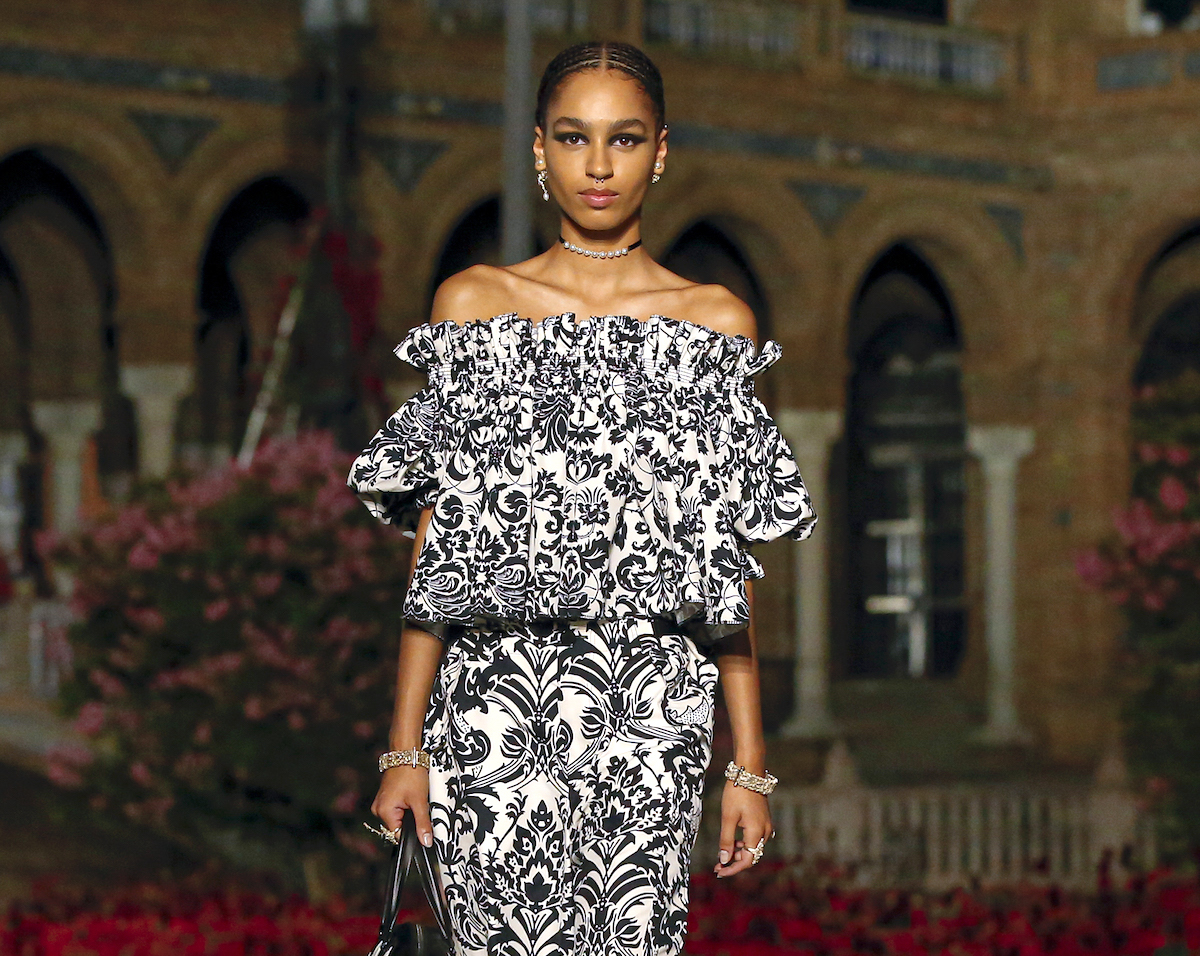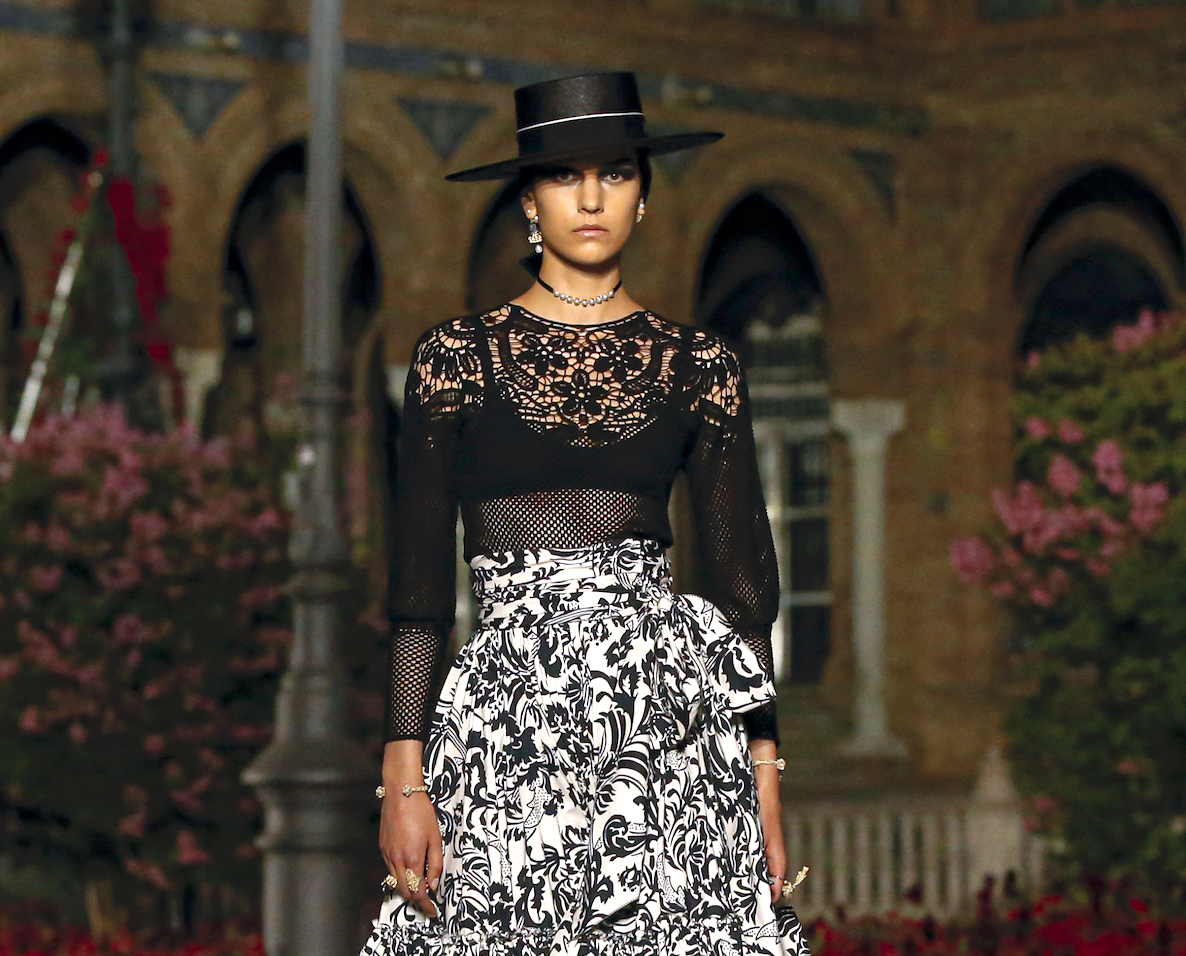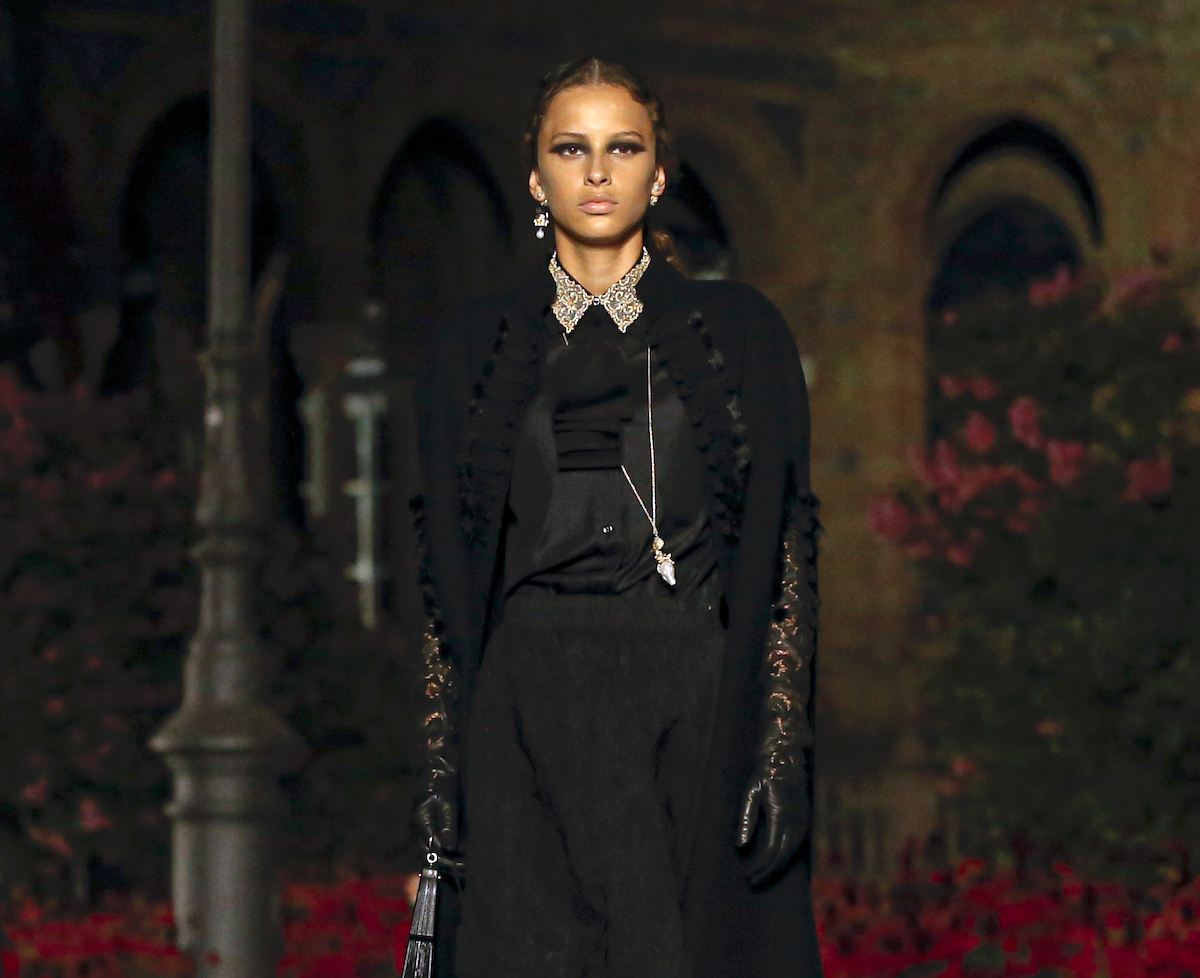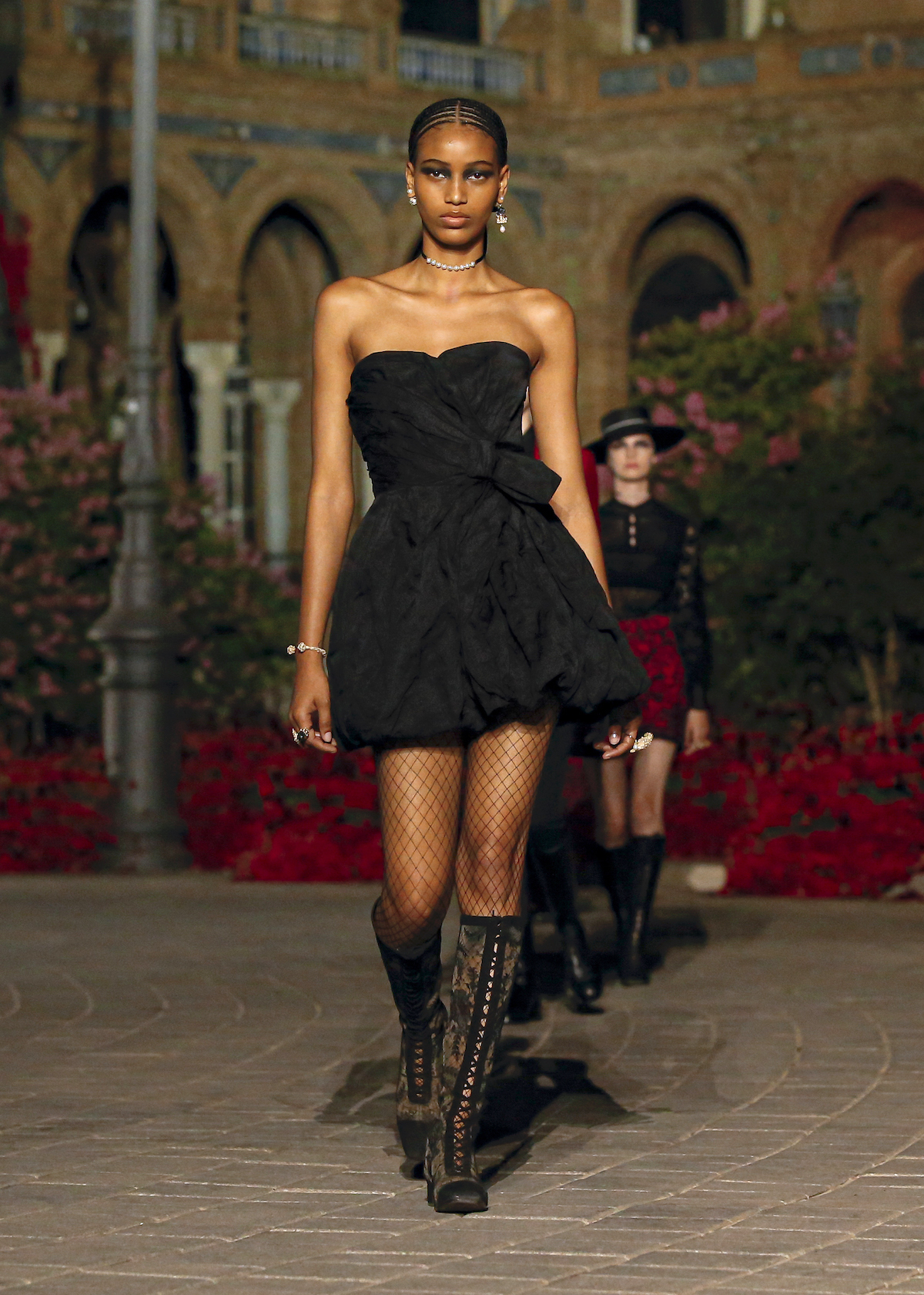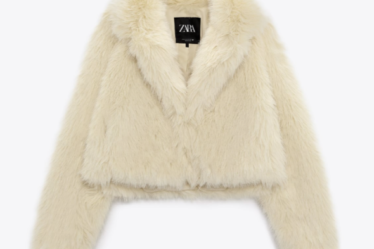
Though resort/cruise collections date back almost a century, they were generally targeted directly at a circumscribed jetset class, who tended to know where to shop for them. But more and more the major houses have been making big events of introducing their “vacation” focused collections, even getting a bit conceptual in presenting them.
To wit, we particularly loved Erdem’s dramatic summer 2021 Trafalgar Square shoot for Resort ’22, as well as Chanel’s glorious presentation a month earlier at Provence’s Carrières de Lumières, for their own Resort ’22 collection. But Dior has arguably just topped them all, traveling to the Andalusian capital of Sevilla, in southern Spain, to introduce its Cruise 2023 line in a most spectacular way.
The backdrop was the city’s breathtakingly epic Plaza de España in the Parque de María Luisa. Built in 1928 for the Ibero-American Exposition of 1929, but seeming centuries older, it remains a monumental example of the opinion-dividing Regionalism style of architecture, which drew upon elements of Baroque Revival, Renaissance Revival and Moorish Revival, in a kind of rejection of the creeping era of Modernism.
The show opens in the dark, with the stark image of a “minimalist” flamenco performance, seeming more connected to contemporary experimental dance than to one dating back to the later 18th Century. But as a suite of violins takes flight, the performance becomes more of a sensual backdrop to the Dior Cruise adorned models beginning to traverse the plaza, the collection paying tribute to the Seville Feria, an extravagant fair that finds women donning colorfully flamboyant dresses, each attempting to out-dazzle the other.
Indeed, Maria Grazia Chiuri‘s latest creations are steeped in Spanish tradition, from bullfighter cut jackets, to taffeta, flamenco style dresses. In fact, the Dior Creative Director was specifically inspired by legendary flamenco dancer Carmen Amaya, who became (in)famous for her androgynous style of dress in the 1940s and ’50s.
“She was an artist with singular, revolutionary movements,” Chiuri explains, “she was the first dancer in her field to dress in men’s clothing, combining power and fragility through her art. Expressing the soul of Spain, she continues to embody a conscious and plural femininity.”
Which most definitely sounds like a strategy for style that we can enthusiastically embrace.
